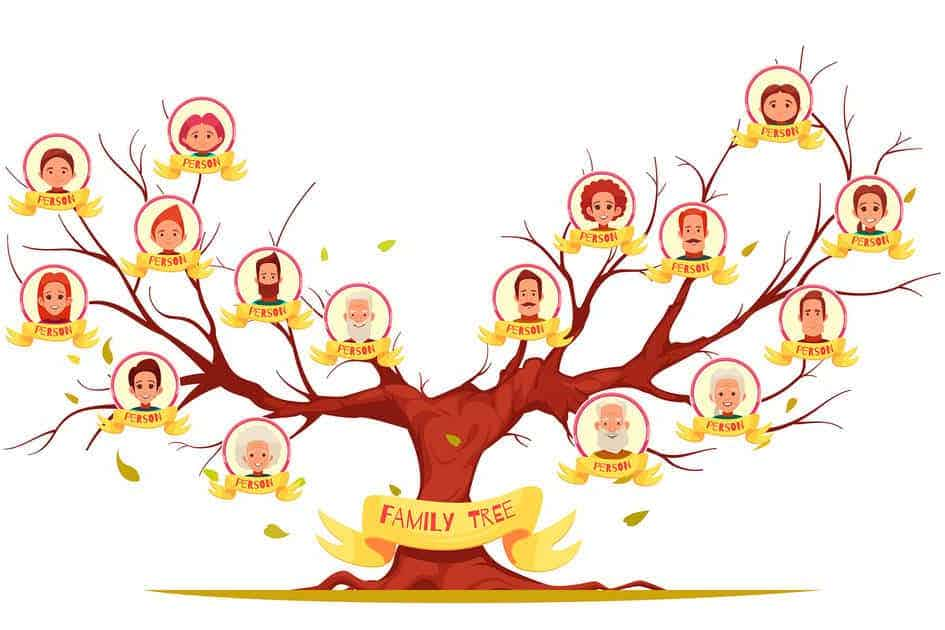Mapping your family tree is a beautiful way to understand your legacy. The journey back in time can teach you many things about your past and lead to exciting discoveries. How should you go about tracing your family tree?
Learning about your ancestry is a lot easier today than it was a few decades ago. The invention of the internet and other digital technologies have made access to records straightforward. You can even go and map out your genes! You can take a DNA test online and receive information about your ancestry’s roots, dating back thousands of years.
Not everyone is interested or willing to take these tests, though, and you might find it easier to conduct your search offline. This is certainly possible! There are plenty of ways to get started with ancestry mapping without relying on the internet for help.
We spoke to Helen Tovey from Family Tree magazine, who told Age Times: "Tracing your family history opens the door to so many new experiences and adventures – whether playing desktop detective, hunting down records and clues about your ancestors online from the comfort of home, or planning genealogy road trips to visit the villages, towns and countries your family once lived.
"Once you start tracing your family history you’ll find you’re never bored again! You’ll find yourself exploring old maps and museums, learning about bygone occupations and ways of life, working out how to read the old handwriting of historic documents from times gone by. What’s more, add in the new connections you’ll make with distant kin from around the globe - when you build your family tree online – you’ll make new friends in family history too."
Here are a few easy steps to get you started.
Talk to your relatives
The best place to start mapping out your family tree is by talking to your family. Your relatives might help you discover things you didn't know. An aunt might know about a great-great-grandfather and point you in a direction that reveals other exciting information.
Begin with the older members of your family. Parents, aunts and uncles can give valuable information regarding your family’s roots. The information on specific relatives that can help includes:
- Full names and dates of birth
- Marital and family statuses
- The places they’ve lived in
- Their occupations and places of study
The above information will help you continue your research and find records of your relatives. For example, if you know the places they have lived in, you could contact the local authority for information. You should write down the information in a notebook or create a digital record.
You shouldn’t just talk with your older relatives. The younger members of the family might have heard stories about relatives that are no longer with us. They could even have done their research as well!
Having a chat with all the relatives you know can be a great place to start. It is essential to be courteous and polite when contacting relatives, especially those you might not know so well. Your relatives might not be as eager to visit the past or learn more about it as you are and you should respect that. If a relative doesn’t want to talk about the topic, then don’t force the subject.
Another important thing is to ask for photos or memorabilia. For instance, old photos can reveal things like past schools or places they’ve lived. Always check any photos you might have for clues and browse the attic for old memorabilia. Learning about your family's history allows you to act like Sherlock Holmes or Miss Marple, so don’t be afraid to turn on those detective senses!
Andrew Martin, host of The Family Histories Podcast, told Age Times: "Now is the best time to start researching and asking questions about your family history.
"Prompts are really useful here - so dig out any photographs that you already have, or ask your relative to get their photo albums out, so that as you go through it together it helps trigger the memories of whoever you’re talking to. Also try drawing out as much of your family tree that you’re aware of, as this encourages people to tell you when something is missing or incorrect.
"If you’re looking for photographs, try writing to or emailing distant cousins - both distant from your family unit (like a second cousin, or great aunt), as well as distant geographically. People used to send photographs from special occasions through the mail to absent loved ones - so you may find a distant relative has some photographs of your close relatives that celebrated weddings, birthdays, or Christmas time."
Create a family tree based on the information
As you start learning more about your family, it’s a good idea to start drawing up a family tree. Having different family connections laid down on a piece of paper can make it easier to see what you still don’t know. For example, you might realize that no one really knows anything about your great-aunt’s father and so you can put your effort into finding more information on him.
Creating a family tree isn’t difficult. You can follow these simple steps to get started:
- Grab a big piece of paper.
- Write your name close to the middle (leaving more space on top)
- Write the names of your children below you and your partner (if you have any).
- Write the names of your parents above you.
- Write the names of your siblings on either side of you.
- Follow the strategy with your parents’ parents, siblings and children.
- If you don’t know the names, simply mark the person as a question mark.
You can do the above digitally as well. Some tools make creating a family tree easy and fun. Check out the Ancestry or Family Echo websites, for example. Both offer free options to create your family tree, and using a digital tool can make the process easier. Ancestry also has records you can browse, although not all features on the website are free.
Once you have started to draw up your family tree, you can see which parts of it remain a mystery. This can help you continue your search for your ancestors. You can create a list of relatives you don’t know about to direct your search. If you have any information on them, perhaps a city they lived in while studying, you can use this to help you with the search.
Track down family roots
Online sources are a great place to start looking for more detailed information on your relatives. But you don’t have to rely solely on websites either, as official records can often be accessed offline as well. You can call the local authorities and ask for photocopies of documents, for example.
The Government has official records that can help you with the births, deaths and careers of family members. You should also check out sites like the National Archive and the General Register Office. You can contact both online, and they offer excellent services for tracing family histories. You can also find details on how to visit the archives in person if you prefer.
You could even make a trip to your ancestors’ birth cities and towns! This is a great way to see where your family came from. Local councils and churches (or other places of worship) might hold information that leads you on the next part of your adventure.
If your family history takes you abroad, you should consider contacting local tour guides for tips. You can even find local historians who might be more than willing to help you get started on your quest to learn more about your relatives. Use social media and travel boards to contact people and start your journey!








